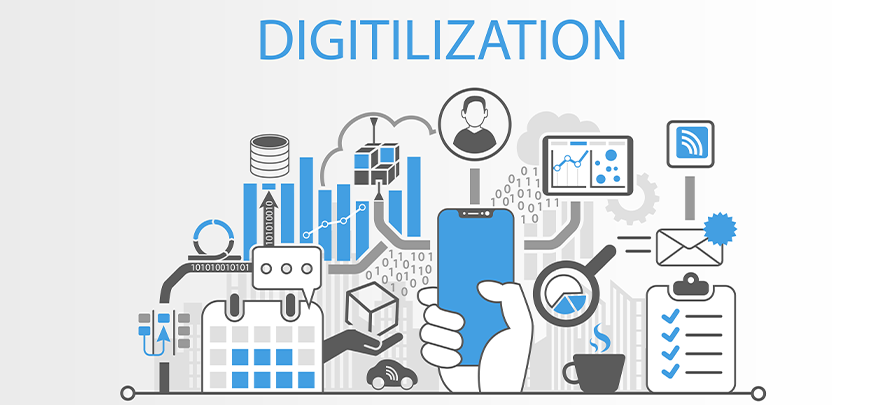Overview of digitalisation in business

Digital & Technology
218 week ago — 5 min read
Digitalisation is the utilisation of advanced innovations to change a plan of action and give new income worth delivering openings. It is the way toward moving to a computerised business.
In business, digitalisation regularly alludes to empowering, improving as well as changing business tasks and additionally business capacities or potentially plans of action/measures and additional exercises, by utilising computerised advancements and more extensive use and setting of digitised information, transformed into insight and significant information
By and large, digitalisation is viewed as the street of moving towards computerised business and advanced change, just as the making of new – computerised – income streams and contributions at the same time. What's more, that requires change. This is the reason numerous individuals reciprocally use digitalisation and computerised change.
Also read: Guide to flawless digital transformation
The distinction between digitalisation and digital change
Digitalisation is the way toward moving to turn into a computerised business, understand an advanced work environment, making an automated flexibly chain, and so forth
As we use it today, advanced change is more extensive than digitalisation to move to computerised business. It needs unquestionably more extensions to be inherent in an enveloping computerised change methodology. It was utilised to depict the change of, for example, paper into computerised data.
Today, a few people, primarily dynamic in the record and checking business, actually utilise the term computerised change while they mean the digitisation of archives and cycles.
Nonetheless, by far most, characterises computerised change as an endeavor vast marvel. Yet, some lone gander at explicit viewpoints.
Necessities for digitalisation
To make digitalisation fruitful, the fitting requirements must be made. Five significant segments of effective digitalisation include:
- Development of a digitalisation technique
- Building an advanced association
- Development of advanced plans of action
- Establishing nimble techniques in item improvement
- Building an adaptable IT framework
Also read: How can SMEs adopt digital transformation?
Preferences of digitalisation for the business sectors
Controlling and finances: Efficient utilisation of assets, lower staff costs, current numbers, diminished venture costs.
Sales: Sales-and accomplice gateway, computerised deals uphold, less complex onboarding
HR: Targeted candidate showcasing, ability recognisability, CRM for invested individuals with all information.
Production: Automated cycles, advanced control through web/portable application, improved assignment of creation merchandise.
Marketing: Analysis of results, customised address, better focusing on, diminished promotion spends, expanding working reach, more limited chance to-showcase.
Management: Future-verification arrangement, adaptable response to advertising changes, higher ROI, and bitter edge.
IT: Flexible and adaptable framework, less exertion for advancement, more limited delivery cycles
Customer service: Customer self-care through an online interface, information the executives and focal client information, quicker help times, improved help quality.
Complete company: Flexibility, versatility, robotisation, elite, high programming quality in the long haul, an establishment for advancement and deftness.
Building a digital organisation
So as to make digitalization effective, the fundamental essentials must be made inside the organization. There are three variations for setting up a computerized association:
- Evolution: Evolutionary difference in the organization to an advanced association. There are fewer raging stages; however, the cycle is exceptionally moderate.
- Revolution: Abrupt rebuilding of the association. The cycle is quicker; however, issues in the whole associations' raging period can jeopardize the existing business.
- Digital unit: Spinning off an advanced unit, either as an office or isolating it into an individual authoritative unit, for example, an auxiliary.
Also read: Cheatsheet for your business’s digital transformation
To explore business opportunities, link with me by clicking on the 'Connect' button on my eBiz Card.
Image source: shutterstock.com
Disclaimer: The views and opinions expressed in this article are those of the author and do not necessarily reflect the views, official policy or position of GlobalLinker.
View S Gangadhararao 's profile
Other articles written by S Gangadhararao Boppana
198 week ago
Importance of automation in industrial process
212 week ago
Most read this week
Trending
Explore the All New Linker.store Store Panel
Ecommerce 124 week ago













Comments
Please login or Register to join the discussion